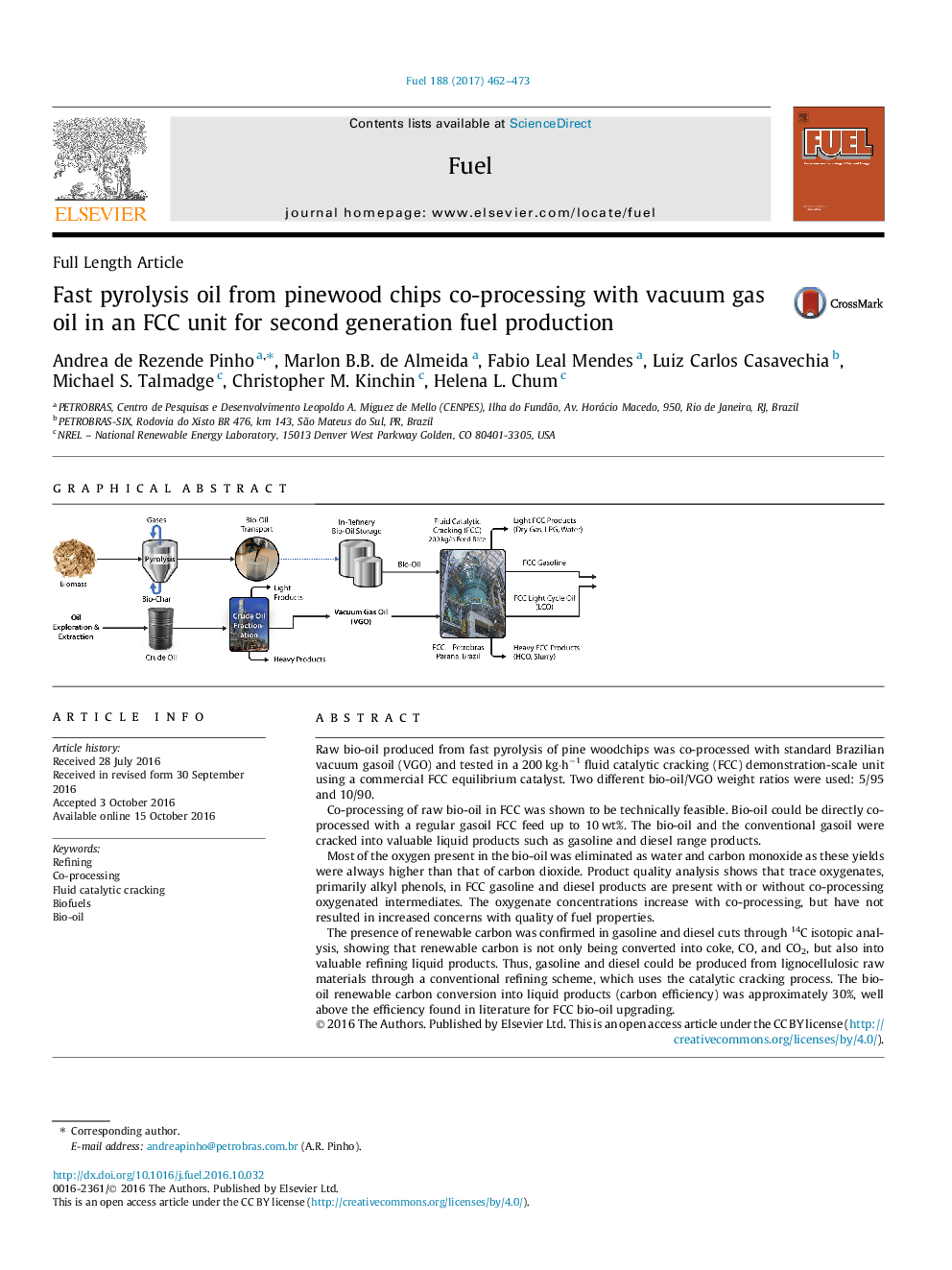| Article ID | Journal | Published Year | Pages | File Type |
|---|---|---|---|---|
| 6475847 | Fuel | 2017 | 12 Pages |
Raw bio-oil produced from fast pyrolysis of pine woodchips was co-processed with standard Brazilian vacuum gasoil (VGO) and tested in a 200Â kgâ hâ1 fluid catalytic cracking (FCC) demonstration-scale unit using a commercial FCC equilibrium catalyst. Two different bio-oil/VGO weight ratios were used: 5/95 and 10/90.Co-processing of raw bio-oil in FCC was shown to be technically feasible. Bio-oil could be directly co-processed with a regular gasoil FCC feed up to 10Â wt%. The bio-oil and the conventional gasoil were cracked into valuable liquid products such as gasoline and diesel range products.Most of the oxygen present in the bio-oil was eliminated as water and carbon monoxide as these yields were always higher than that of carbon dioxide. Product quality analysis shows that trace oxygenates, primarily alkyl phenols, in FCC gasoline and diesel products are present with or without co-processing oxygenated intermediates. The oxygenate concentrations increase with co-processing, but have not resulted in increased concerns with quality of fuel properties.The presence of renewable carbon was confirmed in gasoline and diesel cuts through 14C isotopic analysis, showing that renewable carbon is not only being converted into coke, CO, and CO2, but also into valuable refining liquid products. Thus, gasoline and diesel could be produced from lignocellulosic raw materials through a conventional refining scheme, which uses the catalytic cracking process. The bio-oil renewable carbon conversion into liquid products (carbon efficiency) was approximately 30%, well above the efficiency found in literature for FCC bio-oil upgrading.
Graphical abstractDownload high-res image (181KB)Download full-size image
